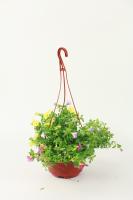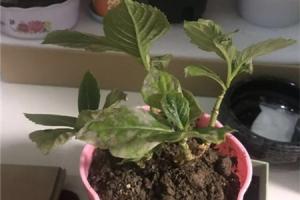Introduction
Palm trees are fascinating plants that add a touch of tropical paradise to any garden or indoor space. While they are generally easy to care for, there are a few things you need to keep in mind to ensure that your palm tree thrives. In this article, we will discuss how to take care of your palm tree plant so that it stays healthy and beautiful.
Light and Temperature
Palm trees thrive in bright, indirect sunlight, so it's best to place your plant near a window with filtered light. They can also grow in low light, but they may become leggy and not grow as vigorously. It's important to keep the temperature consistent, as sudden changes in temperature can cause the leaves to turn yellow or brown. The ideal temperature for most palm trees is between 60 to 80 degrees Fahrenheit.
Watering
One of the most important aspects of palm tree care is watering. Proper watering is essential to keep the foliage lush and green. The frequency of watering will depend on the size of the plant, the size of the pot, and the humidity of your home. A good rule of thumb is to water your palm tree every one to two weeks, but be sure to check the soil's moisture level before watering. Overwatering can cause root rot, while underwatering can cause the leaves to wilt and turn brown.
Soil and Fertilizer
Palm trees grow best in well-draining soil that is rich in organic matter. The pot should have adequate drainage holes to allow excess water to escape. Fertilizing your palm tree plant can help promote healthy growth, but it's important not to over-fertilize. A slow-release fertilizer designed for palm trees is recommended. Apply the fertilizer according to the package instructions, usually once every three months.
Pruning and Grooming
Regular pruning and grooming can help keep your palm tree looking its best. Dead or yellowing fronds should be removed, as well as any brown tips. Use sharp, clean pruning shears to avoid damaging the plant. You can also groom your palm tree by removing any suckers or offshoots that sprout from the base of the plant. These can be propagated into new plants if desired.
Pest and Disease Control
Palm trees are generally resistant to pests and diseases, but they can still be vulnerable to certain problems. Spider mites, mealybugs, and scale insects are common pests that can infest palm trees. These can usually be treated by spraying the plant with an insecticidal soap. If your palm tree becomes infected with a disease, such as palm wilt or fungal infections, it's important to remove infected fronds to prevent the disease from spreading to healthy parts of the plant.
Conclusion
By following these tips, you can successfully take care of your palm tree plant and enjoy its beauty for years to come. Remember to keep the plant in the right light and temperature conditions, water it properly, fertilize it occasionally, and prune and groom it as needed. With a little care and attention, your palm tree can thrive and become a beautiful addition to your home or garden.

 how many times do yo...
how many times do yo... how many planted tre...
how many planted tre... how many pine trees ...
how many pine trees ... how many pecan trees...
how many pecan trees... how many plants comp...
how many plants comp... how many plants can ...
how many plants can ... how many plants and ...
how many plants and ... how many pepper plan...
how many pepper plan...
































